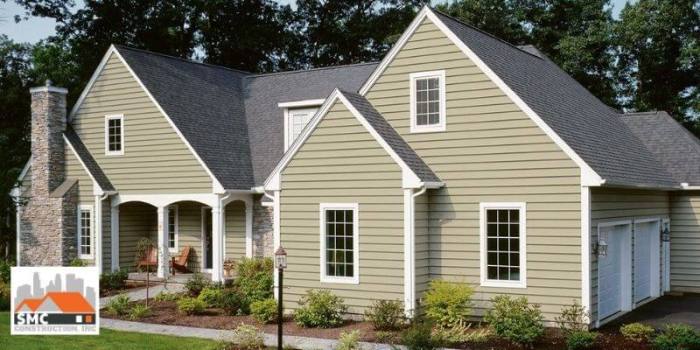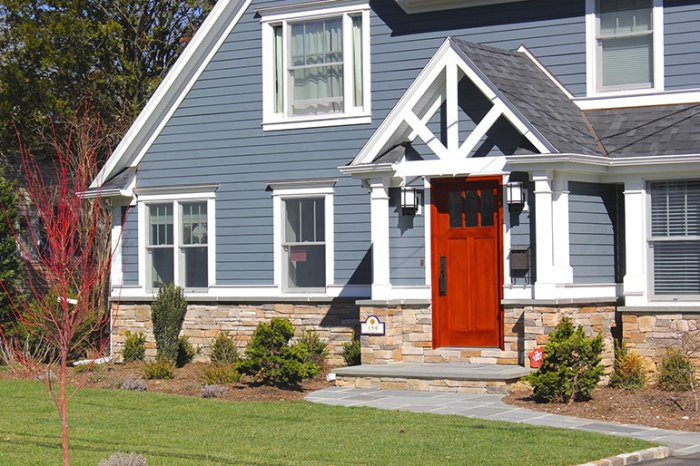Choosing the Best Siding Material for Your House
Embarking on the journey of updating your home with new siding can be both exciting and daunting. With a multitude of options available, each boasting unique qualities, the decision-making process can seem overwhelming. In this guide, we will delve into the world of siding materials, installation, maintenance, and more to help you make informed choices for your home.
Choosing the Right Siding Material
When it comes to choosing the right siding material for your house, there are several options available, each with its own set of advantages and disadvantages. It's important to consider factors such as durability, maintenance requirements, cost, aesthetics, and energy efficiency when making your decision.
Vinyl Siding
Vinyl siding is a popular choice for many homeowners due to its affordability and low maintenance requirements. It is available in a wide range of colors and styles, making it easy to find a look that suits your home. However, vinyl siding may not be as durable as other materials and can fade over time with exposure to the elements.
Wood Siding
Wood siding offers a classic and natural look that can enhance the aesthetic appeal of your home. It is a more expensive option compared to vinyl but can last for many years with proper maintenance. However, wood siding requires regular painting or staining to protect it from moisture and pests.
Fiber Cement Siding
Fiber cement siding is known for its durability and resistance to fire, insects, and rot. It can mimic the look of wood or stucco without the same level of maintenance. While fiber cement siding is relatively low maintenance, it can be more costly upfront compared to vinyl or wood siding.
Metal Siding
Metal siding, such as aluminum or steel, is a durable option that offers good protection against the elements. It is lightweight, easy to install, and can be painted in a variety of colors. However, metal siding may dent or scratch easily and can be prone to rust if not properly maintained.Consider these factors carefully to choose the siding material that best suits your needs and budget.
Preparing for Installation

When getting ready for the installation of new siding on your house, there are several important steps to take to ensure a smooth and successful process. Proper preparation is key to the longevity and durability of your new siding.Inspecting the Current Siding:
Inspecting for Damage
Before installing new siding, it is crucial to thoroughly inspect the current siding for any signs of damage or issues that need to be addressed. Look for cracks, rot, mold, or any other damage that could affect the installation of the new siding.
It is essential to repair or replace any damaged sections before proceeding with the installation to prevent future issues.Checking for Proper Insulation and Moisture Barriers:
Ensuring Insulation and Moisture Protection
Proper insulation and moisture barriers are essential for protecting your home from the elements and ensuring the longevity of your new siding. Insufficient insulation or inadequate moisture barriers can lead to moisture buildup, which can cause damage to the siding and the underlying structure of your home.
Before installing new siding, make sure that the insulation is in good condition and that there are adequate moisture barriers in place to protect your home.By taking the time to inspect the current siding, address any damage or issues, and ensure proper insulation and moisture protection, you can set the stage for a successful installation of your new siding that will enhance the appearance and durability of your home for years to come.
Hiring a Professional vs. DIY Installation
When it comes to installing new siding on your house, one of the key decisions you'll need to make is whether to hire a professional contractor or tackle the project yourself. Both options have their pros and cons, so it's essential to weigh them carefully before making a decision.
Benefits of Hiring a Professional Contractor
- Expertise: Professional contractors have the knowledge and experience to ensure that the siding is installed correctly and efficiently.
- Quality Workmanship: Hiring a professional ensures that the siding will be installed to high standards, enhancing the overall appearance and durability of your home.
- Time-Saving: Professionals can complete the installation in a timely manner, freeing up your time for other activities.
- Insurance Coverage: Many professional contractors are insured, providing you with added peace of mind in case of any unforeseen accidents or damages during the installation process.
Common Challenges and Risks of DIY Siding Installation
- Lack of Experience: DIY installation can lead to costly mistakes due to a lack of expertise in handling siding materials and tools.
- Safety Concerns: Improper installation techniques can pose safety risks to yourself and others, especially when working at heights or using power tools.
- Potential for Damage: Incorrectly installed siding can result in water infiltration, mold growth, and structural damage to your home over time.
Cost Implications and Time Considerations
- Professional Installation: While hiring a professional contractor may come with a higher upfront cost, the quality of workmanship and time saved can outweigh the expense in the long run.
- DIY Installation: Opting for a DIY approach can help save on labor costs, but it may require more time and effort on your part, especially if you lack experience in siding installation.
- Overall, the decision between hiring a professional and DIY installation will depend on your budget, time availability, and comfort level with taking on a home improvement project of this scale.
Siding Installation Process

Installing new siding on a house involves several key steps to ensure a successful and long-lasting result. From measuring and cutting the siding panels to sealing and ventilation, each step plays a crucial role in the overall installation process.To begin with, it is essential to accurately measure the area where the siding will be installed.
This helps determine the amount of siding material needed and ensures a precise fit. Once the measurements are taken, the siding panels can be cut to the appropriate size using a saw or specialized cutting tool.Proper installation of siding panels involves securing them to the exterior of the house using nails or screws.
It is important to follow the manufacturer's guidelines for spacing and fastening to ensure structural integrity. Additionally, paying close attention to the alignment and overlap of each panel is crucial for a seamless and professional finish.Proper ventilation during the installation process is key to preventing moisture buildup and potential damage to the underlying structure of the house.
Adequate ventilation allows air to circulate behind the siding, helping to regulate temperature and humidity levels. Installing vents or creating air gaps can help achieve proper ventilation and protect the house from mold and rot.Sealing the joints and edges of the siding panels is another important step to prevent water infiltration and maintain the integrity of the installation.
Using a high-quality sealant or caulk to seal any gaps or openings will help create a watertight barrier and enhance the durability of the siding.Overall, following these steps and guidelines for measuring, cutting, installing, ventilating, and sealing will ensure a successful and long-lasting siding installation on your house.
Maintaining and Caring for New Siding
After installing new siding on your house, it is essential to properly maintain and care for it to ensure its longevity and keep it looking great. Here are some best practices to follow:
Cleaning Different Types of Siding Materials
Each type of siding material requires specific cleaning methods to keep it looking its best. Here are some tips for cleaning different types of siding effectively:
- For vinyl siding, use a mixture of water and mild soap, along with a soft brush or cloth to gently scrub away dirt and grime.
- For wood siding, avoid using harsh chemicals and opt for a mixture of water and vinegar or a specialized wood cleaner. Be sure to rinse thoroughly to prevent damage.
- For fiber cement siding, use a solution of water and mild detergent, along with a soft brush or cloth to remove dirt and stains. Avoid using abrasive materials that could scratch the surface.
Inspecting for Damage and Addressing Repairs
Regularly inspecting your siding for any signs of damage is crucial to preventing more extensive issues down the line. Here are some tips for inspecting and addressing repairs:
- Look for cracks, holes, or warping in the siding, which can indicate water damage or pest infestations. Address these issues promptly to prevent further damage.
- Replace any damaged or missing siding pieces to maintain the integrity of your home's exterior and prevent moisture from seeping in.
Preventing Mold or Mildew Growth
Mold and mildew can be common issues with siding, especially in damp or shaded areas. Here are some tips for preventing mold or mildew growth:
- Ensure proper ventilation around your home to prevent moisture buildup, which can lead to mold growth on siding.
- Trim back trees or bushes near your siding to allow for better airflow and sunlight, reducing the chances of mold or mildew formation.
Last Recap
As we conclude this discussion on new siding for your house, it's essential to remember that selecting the right material and ensuring proper installation are key to enhancing your home's curb appeal and longevity. With the knowledge gained from this guide, you are now better equipped to embark on this home improvement journey with confidence.
Clarifying Questions
What factors should I consider when choosing a siding material?
Consider factors like durability, maintenance requirements, cost, aesthetics, and energy efficiency when selecting a siding material.
Why is proper insulation important for new siding installation?
Proper insulation helps enhance the longevity of new siding by providing thermal protection and preventing moisture buildup.
What are the benefits of hiring a professional for siding installation?
Professionals offer expertise, ensure proper installation, and can save you time and effort compared to DIY approaches.
How can I maintain the appearance of my new siding?
Regular cleaning, inspections for damage, and prompt repairs can help maintain the appearance and functionality of new siding.




